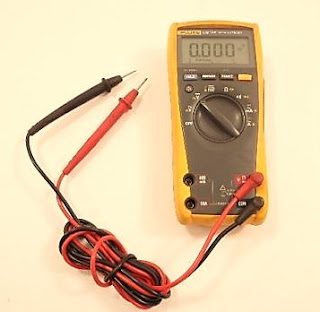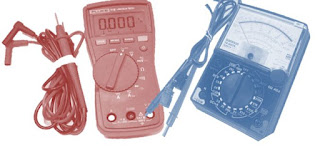The DC ammeter- is used to measure the direct current of a circuit. The unit of measure is ampere (A). An multimeter can be used as ammeter by connecting it in series with the circuit. It requires correct application and polarity to measure the current.
Procedure:
1. Check the pointer of the meter if it set to zero
2. Set the knob at DC and set it to the desired ampere range.There are different ranges including 250 mA ,25mA 2.5mA and 50uA .For safety, set the knob at the top level (250mA ) to gain rough value when the current range is unknown. If you can not read it conveniently try to lower the range of the meter gradually in accordance with the first rough data for precise measurement.
3. Connect the test leads in series with the circuit. Apply the pin of the red lead to positive and black one to negative.
4. Read the current value in the display
Note
Procedure:
1. Check the pointer of the meter if it set to zero
2. Set the knob at DC and set it to the desired ampere range.There are different ranges including 250 mA ,25mA 2.5mA and 50uA .For safety, set the knob at the top level (250mA ) to gain rough value when the current range is unknown. If you can not read it conveniently try to lower the range of the meter gradually in accordance with the first rough data for precise measurement.
3. Connect the test leads in series with the circuit. Apply the pin of the red lead to positive and black one to negative.
4. Read the current value in the display
Note
- Do not touch the test probe.
- Observe the polarity of the meter if the pointer deflects backward or the value to be negative,remove the connection immediately and reverse the connection of the test probe.


